|
|
ADDRESS AT THE JOINT ISRO-AMRITA VILLAGE RESOURCE CENTRE (VRC) PROJECT, ETTIMADAI, COIMBATORE
06-07-2005 : Ettimadai, Coimbatore
Dimensions of societal transformation
I am delighted to inaugurate the Joint ISRO-AMRITA Village Resource Centre (VRC) Project at Ettimadai. I am very happy to know that this Village Resource Centre has a mission particularly to take the benefits of the space technology and knowledge products from the university directly to the communities at the grass root level like people who work in fisheries and agriculture and provide healthcare and educational services. I have seen the telemedicine facility with Kochi and Kollam and interacted with school children at Village Resource Centres. I had a discussion with farmers at Kalpetta and interacted with fishermen at Nagapattinam. Also, I had an interaction with the Tsunami affected people in Kerala through the ISRO-AMRITA Village Resource Centre Connectivity. My greetings to the members of ISRO, Amrita Vishwa Vidyapeetham and other industrial partners.
User Centric Data
Now I would like to narrate one incident during my visit to Konkan area to inaugurate a computer kiosk called Hole-in-the-Wall. The inauguration went beautifully well, the people were able to get the information at the touch of a button immediately and proper answer appeared on the screen. I was very happy. That evening, I went for a walk on the seashore. As soon as I reached there, many fishermen converged on me. It was before the Presidency, but they knew me nevertheless. I enquired with them about the fish catch, boat conditions and repair facilities, etc. I also enquired how they are using Hole- in-the-Wall. They said, ?Our children are very happy and they go and play there. But what we essentially needed was not there.? The fishermen then eloquently narrated their requirements, even though they were not IT savvy people. For example, they said, ?We go to sea everyday, leaving our families at 3.00 a.m., and we return only late in the evening. We leave, without knowing what is in store for us in the sea, such as the timing and height of tidal waves; wind and weather conditions at various times and also the progress of the monsoon situation during the season. That too, we need this data periodically updated everyday.? The Hole-in-the-Wall kiosk does not provide it. A reflection on this incidence brings out four insights.
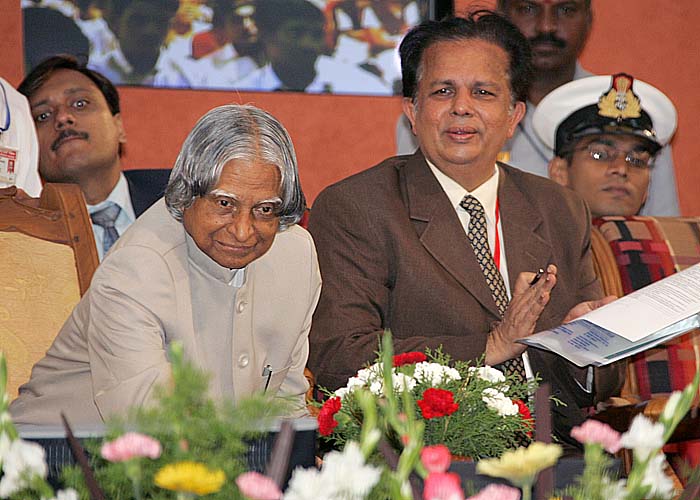
1. The essential data required for the targeted population has to be derived by visiting the village, talking to the rural people by understanding their requirement. We should not assume ourselves, what they would like to have and thrust on them what we have. Fitting foot to the shoe situations, are never liked.
2. Providing meteorological data for both farmers and fishermen has to be area specific, covering say 20 or 30 villages in the vicinity of sea coast or in the farming area. Local relevance of information offered is essential. User has got a tough need and tough problem for system integrators in providing updated data.
3. Trained manpower with experience have to be deputed who can read the data and explain to the people by relating meteorological data, weather data, marketing data on fish and agricultural commodities. These data has to come from various connected institutions which provide the service to the people on a timely basis periodically. Blended knowledge is a better knowledge.
4. A low cost multi-task handheld computer with GPS and mobility should be developed by private industries and organisations and should reach the fishermen and farmers in different parts of the country. They should value this tool for their benefit.
With this experience, we should make the village resource centres as the knowledge centres in the villages in a fully connected environment with a mission of skill and knowledge enabling people leading to sustainable economic development in the rural areas.
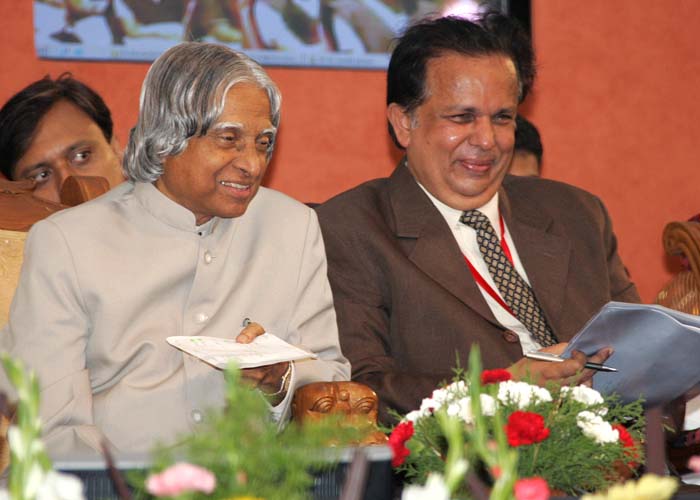

Establishing Village Panchayat Knowledge Centers
India has approximately 2.3 lakh Village Panchayats. I visualize establishment of village knowledge centers in these Panchayats to empower the villagers with the knowledge and to act as a nodal center for knowledge connectivity for the villagers.
Village Knowledge Centre should have a computer terminal, wireless (Wi-Max) connections or fibre broadband or satellite connectivity with the nodal knowledge centres at the district level, and equipped with peripherals to function as a self sustained knowledge centre.
The knowledge centre should have facility for reading the text with an audio output so that people, who are unable to read, can also benefit. The knowledge center can also be used for collection, digital storage and dissemination of village specific information pertaining to agriculture, craftsmanship, arts, artisan techniques, informal judicial system practiced in village based on values, local remedies for simple ailments, village stories with moral values, village history, village folk songs, village cultural traditions, traditional medicinal practices followed in villages and village marketing information and methods. In nutshell, all good side of village life should be available in the knowledge centre. Such information presently is being transmitted through word of mouth and with changing generation, it is being lost. Apart from providing tele-education and tele-medicine facilities, commercial transactions and administrative issues can also be integrated.
Last week when I visited Nagapattinam, I have seen the village resource centre established by TATA Tsunami Relief Committee in association with MSSRF. When I discussed with the youth members who are operating the system, I found they are helping the locals by imparting education through computers, helping the Self Help Group Members to maintain their accounts, providing weather forecast data, etc. While it is very good, the important issue of providing a live data base on various services to the fishermen and farmers needs to be added as discussed. This has to be a coordinated effort of various institutions. We have to cover considerable ground in this regard.
I suggest to ISRO to have a real time link with world meteorological forecast, Indian meteorological centres, and agricultural service stations to provide a live data to any Panchayat Knowledge Centre in the country which can access the ISRO network through any communication medium. Localized weather forecast is a specialized area.
Since I am with students and teachers, let me talk to you about on coming knowledge society and its components. Also I will be sharing my experience with you how my teacher has built the capacity in me for both design and development and meeting the challenges in life.
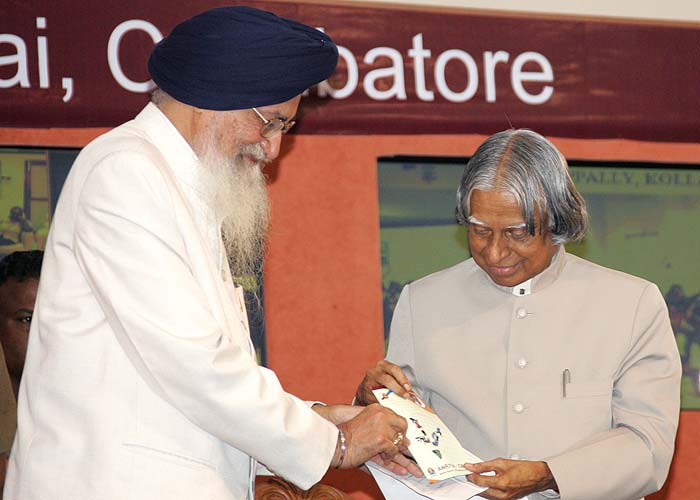

Growth of Knowledge Society
During the last century, the world has undergone a change from agriculture society, where manual labour was the critical factor, to industrial society where the management of technology, capital and labour provided the competitive advantage. Then the information era was born in the last decade, where connectivity and software products are driving the economy of a few nations. In the 21st century, a new society is emerging where knowledge is the primary production resource instead of capital and labour. The Knowledge society is powered by innovation capacity. Efficient utilisation of this existing knowledge can create comprehensive wealth of the nation and also improve the quality of life - in the form of better health, education, infrastructure and other social indicators. Ability to create and maintain the knowledge infrastructure, develop knowledge workers and enhance their productivity through creation, growth and exploitation of new knowledge will be the key factors in deciding the prosperity of this Knowledge Society. Whether a nation has arrived at a stage of knowledge society is judged by the way the country effectively deals with knowledge creation and knowledge deployment in all sectors like IT, Industries, Agriculture, Health Care etc.,
AMRITA Vishwa Vidyapeetham has a major role to play in this transformation process of our society into a knowledge society through their value added education system. There has been considerable effort to apply technology for improving the delivery of education system over the years. With the availability of an exclusive education satellite (EDUSAT), the time is ripe for making intense use of ICT to create an interactive virtual class rooms in all our remote areas. Now I would like to discuss the ingredients of Knowledge Society.
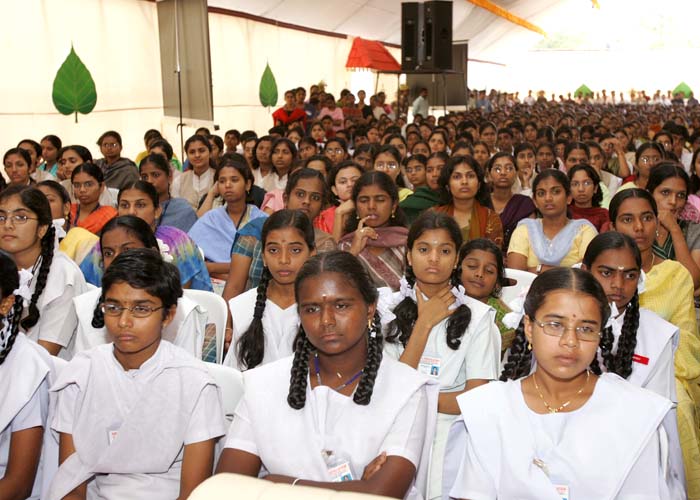

Necessary ingredients for Knowledge Society
Knowledge is converted into wealth for social good through the process of innovation. Innovation is an important factor for the competitiveness of both service and manufacturing sectors. Innovation tends to emanate less from R&D and more from other sources including organizational change. Hence there is an urgent need to establish an innovation system in the country. Such a system would involve creation of clusters, which are networks. This network can include inter dependent firms, knowledge producing institutions/ universities, colleges/institutes, research institutes, technology providing firms/bridging institutions, (for example think tanks, providers of technical and consultancy services) and customers linked in a value addition creating production chain. The concept of clusters goes beyond that of a firm network, as it captures all forms of knowledge sharing and exchange. Thus, an innovative system with its clusters would tap into the growing stock of global knowledge, assimilate and adopt it to local needs and finally create new knowledge and technology. AMRITA Vishwa Vidyapeetham should propagate the new knowledge among the students spread in different parts of the country and abroad. This will be the greatest contribution AMRITA will be making to provide value added education to the youth of the nation who are the vital resource for transforming India into a developed nation before 2020.
I understand that AMRITA has taken number of steps to apply ICT for providing value added services to education. AMRITA is working with EDUSAT programme and providing video conferencing based tele-education. Since you are in this mission, I would like to share my experience with a universal tele-education system implemented in Rashtrapati Bhavan.
The Experience: Recently, I addressed five colleges in different parts of Punjab as a part of Distance Education Programme. I referred in my classroom the subject what I was teaching, relevant Digital Library reference, a page from book reference and my talk delivered during an international conference on e-governance through my website. I could see all the class students from various locations. They can also see me and interact with me. Such an interactive tele-education delivery system is fully functional. This integrated solution will enable AMRITA to realize a cost effective virtual dynamic classroom. AMRITA may like to study the system and make use of it for realizing the goals of the university to become a world class institution.
Now I would like to discuss about the role of faculty members in building capacities among the students.
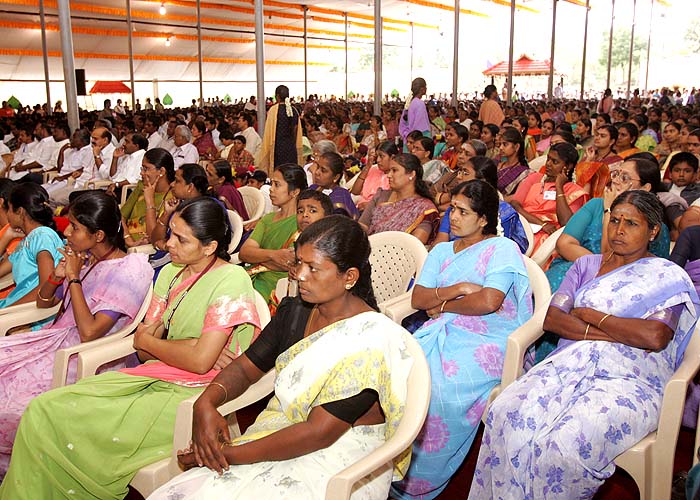

The Role of Faculty Members: Capacity Building
Many of our faculty members have successfully groomed young innovators who can innovate and create innovative organisations, which are relevant to the society. The success of your students is a testimony to your great service. I am sure that each one of you would create many innovators in the field of science, engineering, management, agriculture, law, information technology and other disciplines taught by this University. For participating in the nation building tasks, the capacities required to be built among the students by the faculty members are: the capacity for research and inquiry, the capacity for creativity and innovation, particularly the creative transfer of knowledge, the capacity to use high technology, the capacity for entrepreneurial leadership and the capacity for Moral Leadership. The aim of the faculty members should be to build character, human values enhance the learning capacity of the students through technology and build the confidence among them to be innovative and creative which in turn will enable them to contribute towards making their organisations competitive in the global environment.
Now I have talked about the knowledge society and capacity building, I would like to highlight the experience that I had with Prof. Satish Dhawan, who built the capacity in me and inculcated the spirit that ?you should not get defeated?.
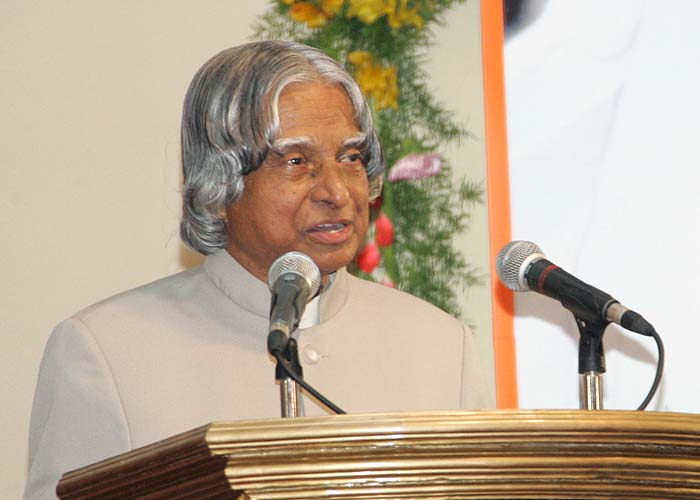

My teacher PROF. SATISH DHAWAN
I started my career in Delhi with the Ministry of Defence. Later I joined Defence Research and Development Organisation (DRDO) in 1958 at Aeronautical Development Establishment at Bangalore. There with the advice of the Director, I took up the development of Hovercraft. Hovercraft design needed the development of a ducted contra- rotating propeller for creating a smooth flow balancing the torques. I did not know how to design a contra-rotating propeller though I knew how to design a conventional propeller. Some of my friends told me that I can approach Prof. Satish Dhawan of Indian Institute of Science, who was well known for his aeronautical research and teaching, for help in designing the ducted contra-rotating propeller.
I took permission from my Director Dr. Mediratta and went to Prof. Satish Dhawan who was sitting in a small room in Indian Institute of Science with lot of books in the background and a blackboard on the wall. Prof. Satish Dhawan asked me what the problem was that I would like to discuss? I explained the problem to Prof. Dhawan about my project work. He told me that it is really a challenging task and he would teach me the design if I attend his classes in IISc between 2.00 p.m. to 3.00 p.m. on all Saturdays for the next Six weeks. He was a visionary teacher. He prepared the schedule for the entire course and wrote it on the black board. He also gave me the reference material and books I should read before I start attending the course. I considered, this as a great opportunity and I started attending the discussion and started meeting him weekly basis. Before commencing each meeting, he would ask critical questions and assess my understanding of the subject. That was for the first time that I realized how a good teacher prepares himself for teaching with meticulous planning and prepares the student for acquisition of knowledge. This process continued for the next six weeks. I got the capability for designing the contra-rotating propeller. Prof. Dhawan told me that I am ready for developing the contra-rotating propeller for a given hovercraft configuration. That was the time I realized that Prof. Satish Dhawan was not only a teacher but also a fantastic development engineer of aeronautical systems.
Later during the critical phases of testing Professor Dhawan was with me to witness the test and find solutions to the problems. After reaching the smooth test phase, contra-rotating propeller went through 50 hours of continuous testing. Prof. Satish Dhawan witnessed the test himself and congratulated me. That was a great day for me when I saw the contra rotating propeller designed by my team performing to the mission requirement in the hovercraft. However, at that time, I did not realize that Prof. Satish Dhawan would become Chairman, ISRO and that I would get the opportunity to work with him as a Project Director in the development of satellite launch vehicle SLV-3 for injecting the Rohini Satellite into the orbit. Nature has its own way to link the student?s dream and the real life later.
This was the first design in my career which gave me the confidence to design many complex aerospace systems in future. The hovercraft could fly just above the ground level carrying two passengers. I was the first pilot for this hovercraft and I could control and maneuver the vehicle in any direction. Through this project I learnt the techniques of designing and developing the contra-rotating propeller. Above all, I learnt that in a project, problems will always crop up; we should not allow problems to be our masters but we should defeat the problems and succeed.
With the above capacities and the spirit that "we can do it" will enable the students to transform the Indian society in a knowledge-led world.

Conclusion
A new situation is emerging in the national scene of 2005. In the Indian history, very rarely we have come across a situation, all at a time, an ascending economic trajectory, continuously rising foreign exchange reserve, global recognition of technological competence, energy of 540 million youth, umbilical Connectivities of 20 million people of Indian origin in various parts of the planet, and the interest shown by many developed countries to invest in our engineers and scientists including setting up of new R&D centers. In this context, if the institutions like AMRITA Vishwa Vidyapeetham have the major role to play in creating enlightened citizens with the required capacities to work towards transforming India into a developed nation before 2020.
I sincerely believe the Village Knowledge Centre is one of the catalytic agents for transforming our rural population as the members of the knowledge society which reflects the prosperity of a developed nation. Hence, institutions like AMRITA Vishwa Vidyapeetham may consider adopting 50 villages around Coimbatore and develop a self sustaining PURA complex on the lines of the working PURA model called Periyar PURA at Vallam. Periyar PURA provides Physical, Electronic and knowledge connectivity which leads to economic connectivity through skill enabling three lakh villagers located in 65 villages. The focus of such a PURA complex organized by AMRITA Vishwa Vidyapeetham should be based on employment generation utilizing the small and medium industrial base of the Coimbatore area and value add by bringing the state-of-the-technologies in the manufacturing sector for small scale home grown consumer products. In this effort empower the students; motivate employment seeking youth to start rural enterprises in and around Coimbatore region.
More than five decades of independence have seen cities as hub of growth and development with villagers as spokes feeding food and labour. Now, the time has come when village must become the hub of competence building and value addition skills. I wish all of you success in your missions in promoting rural development apart from your mission of academic education.
May God bless you.
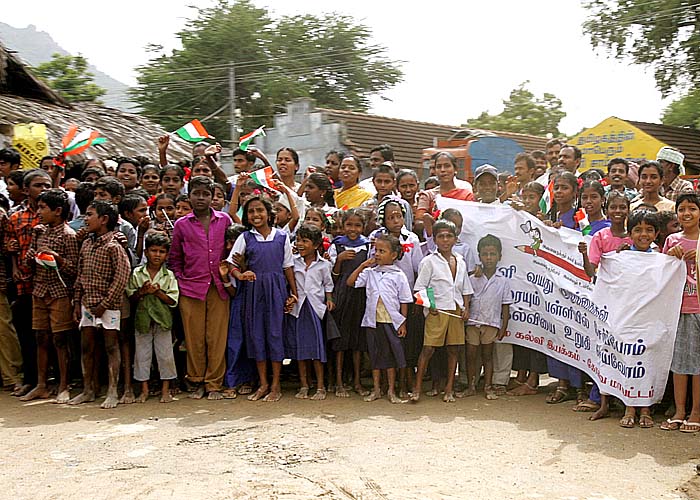
<<Back
|
|